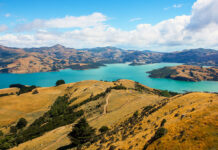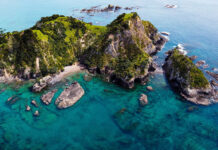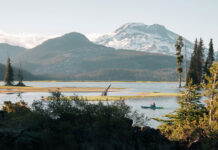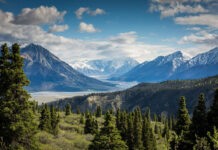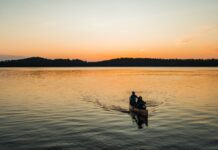Dustin Silvey has sea kayaked in numerous places around the world. Visiting this UNESCO World Heritage Site by human power has been a dream for Silvey since 2004. He is currently planning more adventures while finishing his PhD in medicine, working with Indigenous youth.
Off the coast of Ecuador in the Pacific Ocean lies an archipelago that can transport travellers to a prehistoric time. The Galápagos Islands are on the bucket list of many travellers. It consists of hardened molten lava, small shrubs and a myriad of species of animals that have little-to-no fear of humans. I had become interested in the islands after my first trip to Ecuador in 2004. Twelve years later I was able to return for a, off-the-beaten-path visit to these famous islands. Most people visit the islands on large yacht tours. We decided to try something a little different. Working with ROW Adventures, we secured a guide, camping permits— which are close to impossible to obtain on the islands—supplies and a fleet of kayaks.
We started our trip on the Island of San Cristobal. Curious turtles surfaced along the kayaks and dolphins leapt in the small swells. Sea lions swam under our kayaks and blue-footed boobies swooped low, investigating what food we had brought. At camp, hermit crabs visited in hopes of acquiring some fallen scraps. Iguanas perched on the rocks waiting for the sun to set and sea lions waddled up the beach to investigate.
DAY 1-3
After landing in San Cristobal Island, we paddled roughly four hours along the coast to reach our secluded camping beach. The next day was spent paddling a couple hours down the coast and then jumping aboard a small catamaran for snorkeling along Kicker Rock, looking for white tip reef sharks and sea turtles. On day three we headed to Isabella Island, the least modernized island and looked for tortoises and flamingos.
DAYS 4-6
We spent the day hiking Sierra Negra, the second largest active volcano in the world. The following day we headed out to do some snorkeling with more sea turtles than a person could count. Finally, we searched for the elusive hammerhead shark. We found it.
DAYS 7-8
The next day we headed to Santa Cruz Island and did some paddling around its coast. The last day was spent hiking to the highest point of the island and looking for more tortoises.
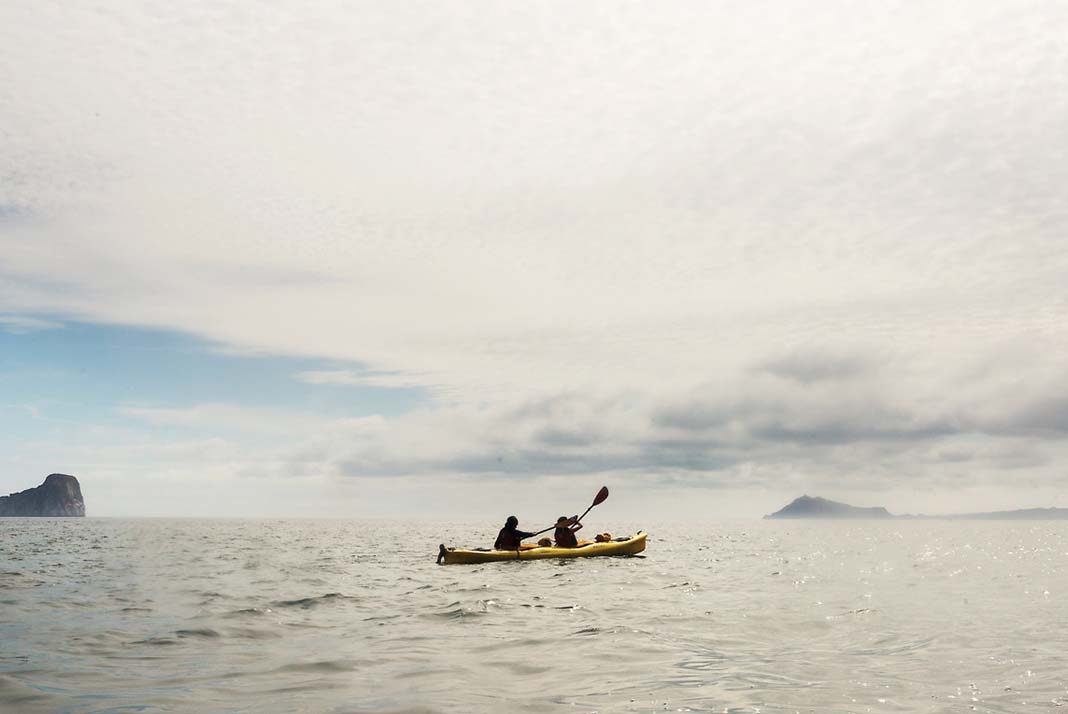
Stats
WILDLIFE
Sea lions, sea turtles, tortoises, reef sharks, hammerhead sharks, finches, flamingos, iguanas,
dolphins, crabs, hermit crabs, blue-footed boobies and more fish than you can count.
TERRA
Dry, rocky islands covered in white sand formed by calcium carbonate.
POPULATION
25,000
DIVERSIONS
Snorkel with sea turtles and reef sharks, hike the still active Volcano Sierra Negra in Galápagos, visit the tortoise breeding centre. Wander the islands and try not to step on the marine iguanas whose colours blend into the rock and search for flamingos in the San Isabela lagoon.
BEST EATS
Ceviche made from fresh fish caught that morning.
OUTFITTERS
Only one kayak company has a permit to camp on the islands: Row Adventures [Rowadventures.com]. A kayaking trip with them lasts eight days with a total of four days of kayaking around the islands, with the remaining time being spent on hiking and boating expeditions. The two nights of camping is an unforgettable experience that is unheard of on the islands.
HOW TO GET THERE
The Galápagos Islands are located off the coast of Ecuador. The best way to the islands is via a flight from either Ecuador’s capital, Quito, or via the largest Ecuadorian city, Guayaquil.
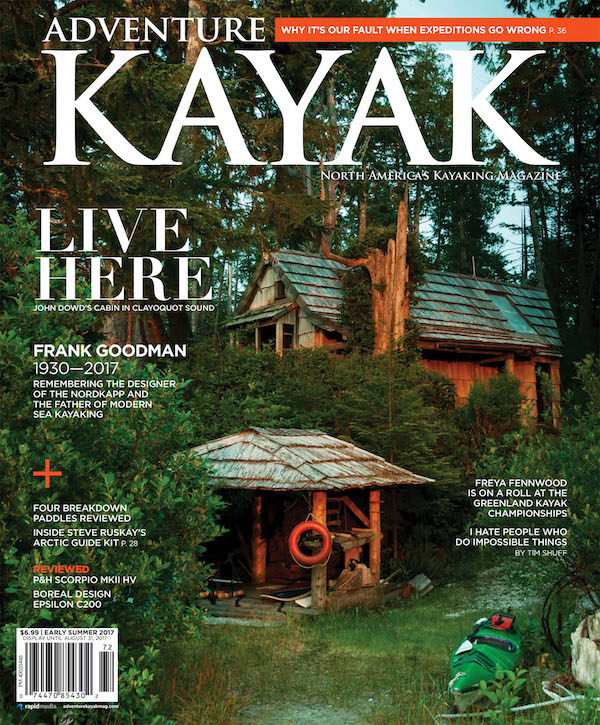 This article originally appeared in Adventure Kayak Early Summer 2017 issue.
This article originally appeared in Adventure Kayak Early Summer 2017 issue.
Subscribe to Paddling Magazine and get 25 years of digital magazine archives including our legacy titles: Rapid, Adventure Kayak and Canoeroots.



